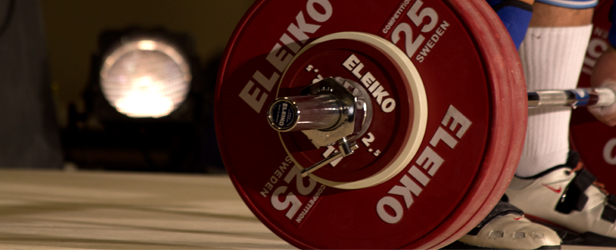
One of the biggest problems that we face in training today’s athletes is that they’re out of shape! Whether professional or amateur, many of these athletes come to their teams severely unconditioned. With physical education programs being cut from school curriculums and child obesity rising every year, we need to take a long hard look at the values that physical conditioning provides.
In 1974, John Jesse wrote a landmark book titled, The Wrestling Physical Conditioning Encyclopedia. In it, he hits on a key problem that has escalated to an epidemic today. According to Jesse:
“In accepting the concept of progressive resistance training with weights, the coaching profession in the English speaking countries, particularly America and Canada, were faced with cultural problems. With machines doing most of the work, the majority of young men entering athletics were not drawn from a background of labor work in the mines, on the farms, in the forests, or on the docks. With increasing affluence, urbanization, and mechanization, children were losing the philosophy of hard work and patience to attain a goal.” (Jesse, page 65)
If this was a problem in 1974, we can only imagine the dilemmas facing today’s athlete. Parents and even coaches want their kids to specialize earlier and earlier. However, their sporting lives and health may be compromised because they’re not building the strong foundation that Jesse refers to in his book. Rarely do kids do any form of manual labor, whether it’s chores around the house or jobs that require strenuous physical activity. Much has been lost by this change in our society.
Overuse injuries, burn out, and setbacks can be blamed on our society’s lack of interest in building athletes with strong foundations. The term “GPP” has been used much in the past few years. General physical preparation (GPP) has been revitalized because more and more coaches are finding that their athletes are out of shape. However, GPP is more than just “conditioning.” It’s the development of general qualities in a wide spectrum—flexibility, muscular strength, muscular endurance, speed, and proprioception. Eastern Europeans used this concept a great deal in building great Olympic athletes. Great Strongmen of the past also used a similar concept.
While this sounds wonderful, implementing such a concept can often be difficult because coaches have less and less time to work with their athletes. Coaches have to prioritize the methods used to increase these levels within the framework of what they’re allowed to do. This is one main reason why “Strongman” training has seen a big boost in sports performance training.
You don’t have to change your name to Magnus or exclusively use Strongman training in your system. You can use very basic implements and ideas to greatly accelerate the success of your program. For example, Allan Hedrick, the strength coach at the Air Force Academy, is a huge proponent of keg lifting for his athletes. He believes that such training is great for sport-specific training as well as injury prevention.
I personally have a great fondness for sandbag training. Why sandbags? Sandbags offer many of the same benefits of odd lifting, but they also possess many other advantages. The weight can be changed very quickly for different levels of athletes. They’re inexpensive so they’re perfect for team training situations and can even be taken outdoors. Sandbags train multiple qualities at once such as hand strength, back and hip strength, speed or maximal strength, general conditioning, core strength, flexibility, tendon and ligament strength, and mental toughness. One workout is all it takes to appreciate the impact that sandbags can have on one’s training.
Sandbags can be used exclusively, but they also compliment kettlebell training extremely well. Below are several different workouts—one that exclusively uses sandbags and two that demonstrate how to integrate them with kettlebells.
Workout 1: Sandbag only
A1. Shouldering, six sets of three each side, rest 75 seconds
A2. Push press, six sets of five, rest 75 seconds
B1. Zercher squats, four sets of six, rest 60 seconds
B2. Half moon snatches, four sets of six each side, rest 60 seconds
C1. Bear hug carry, two sets of two minutes
Workout 2: Mixed implements
A1. Kettlebell front squat, 3, 2, 1, 3, 2, 1, rest 90–120 seconds in between
B1. Sandbag clean and press, five sets of three, rest 75 seconds
B2. Shouldering lunge, five sets of four each leg, rest 75 seconds
C1. Pull-ups, three sets of eight, rest 60 seconds
C2. Kettlebell get-ups, three sets of five, rest 60 seconds
Workout 3: Mixed implements
A1. Sandbag shouldering, four sets of three each side, rest 75 seconds
A2. Kettlebell windmills, four sets of three each side, rest 75 seconds
B1. Sandbag shoulder get-ups, three sets of two each side, rest 60 seconds
B2. Kettlebell renegade rows, three sets of five each arm, rest 60 seconds
C1. Kettlebell overhead, carry 30 seconds, rest 30 seconds
C2. Sandbag Zercher, carry 30 seconds, rest 30 seconds
Elite Fitness Systems strives to be a recognized leader in the strength training industry by providing the highest quality strength training products and services while providing the highest level of customer service in the industry. For the best training equipment, information, and accessories, visit us at www.EliteFTS.com.








